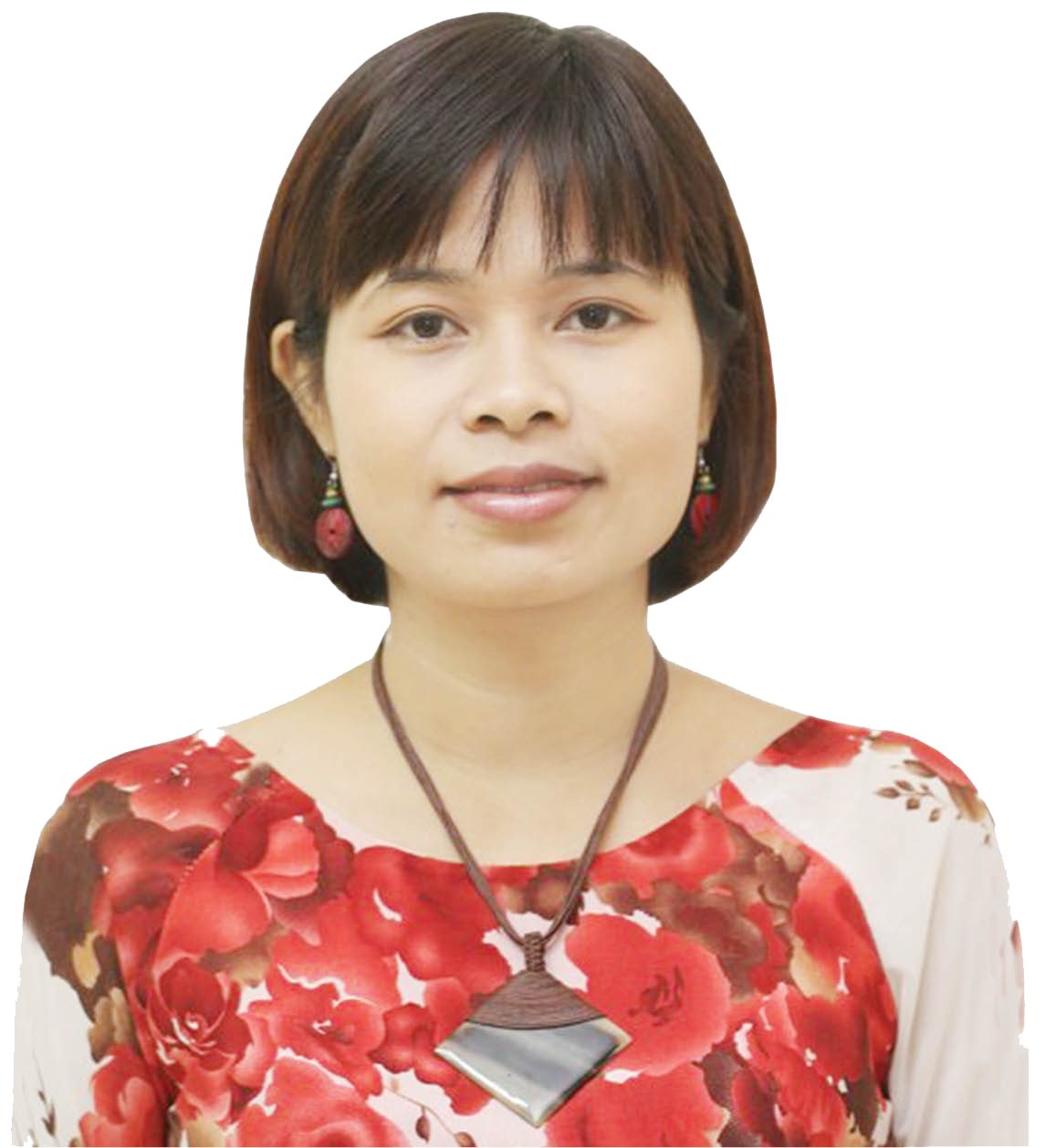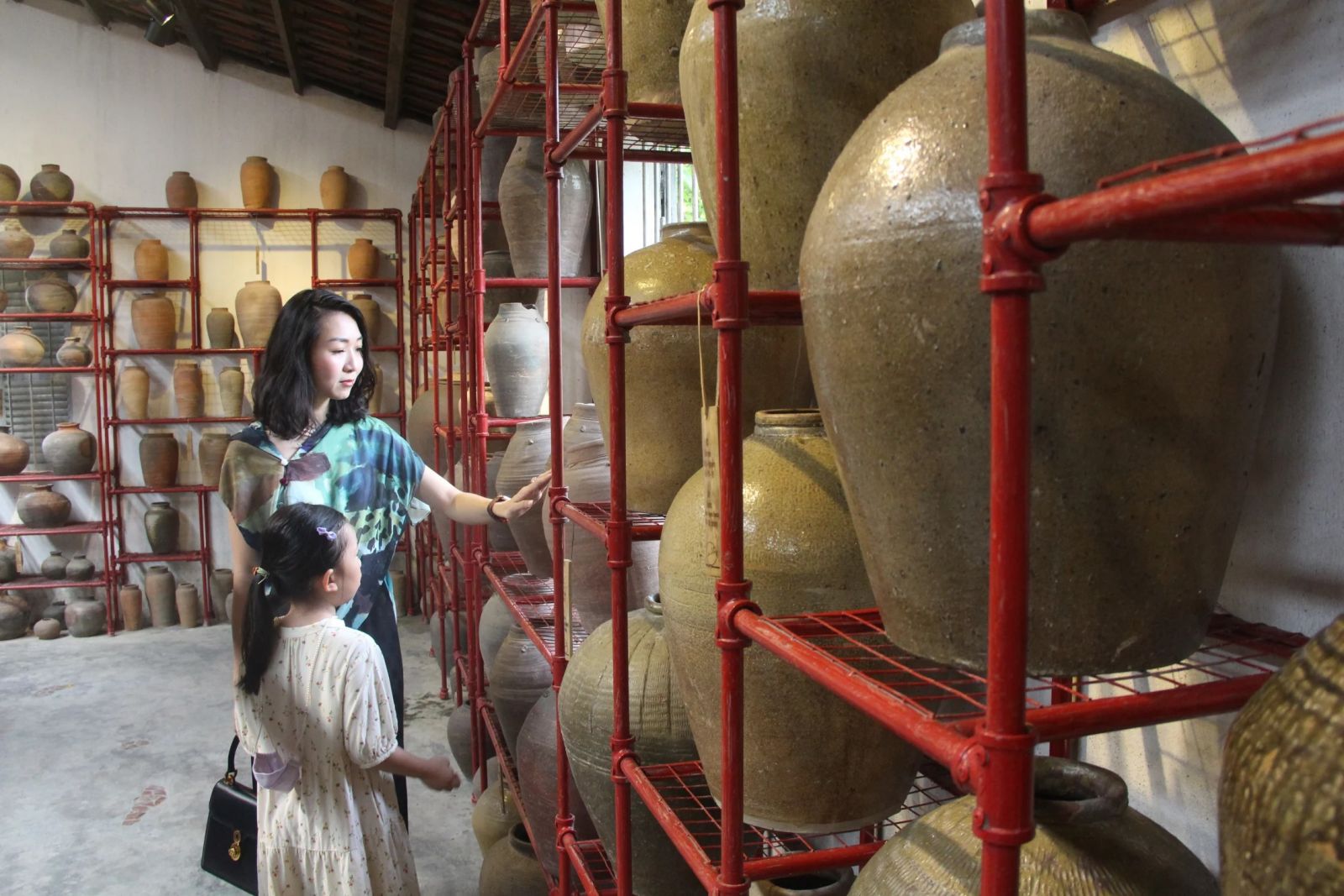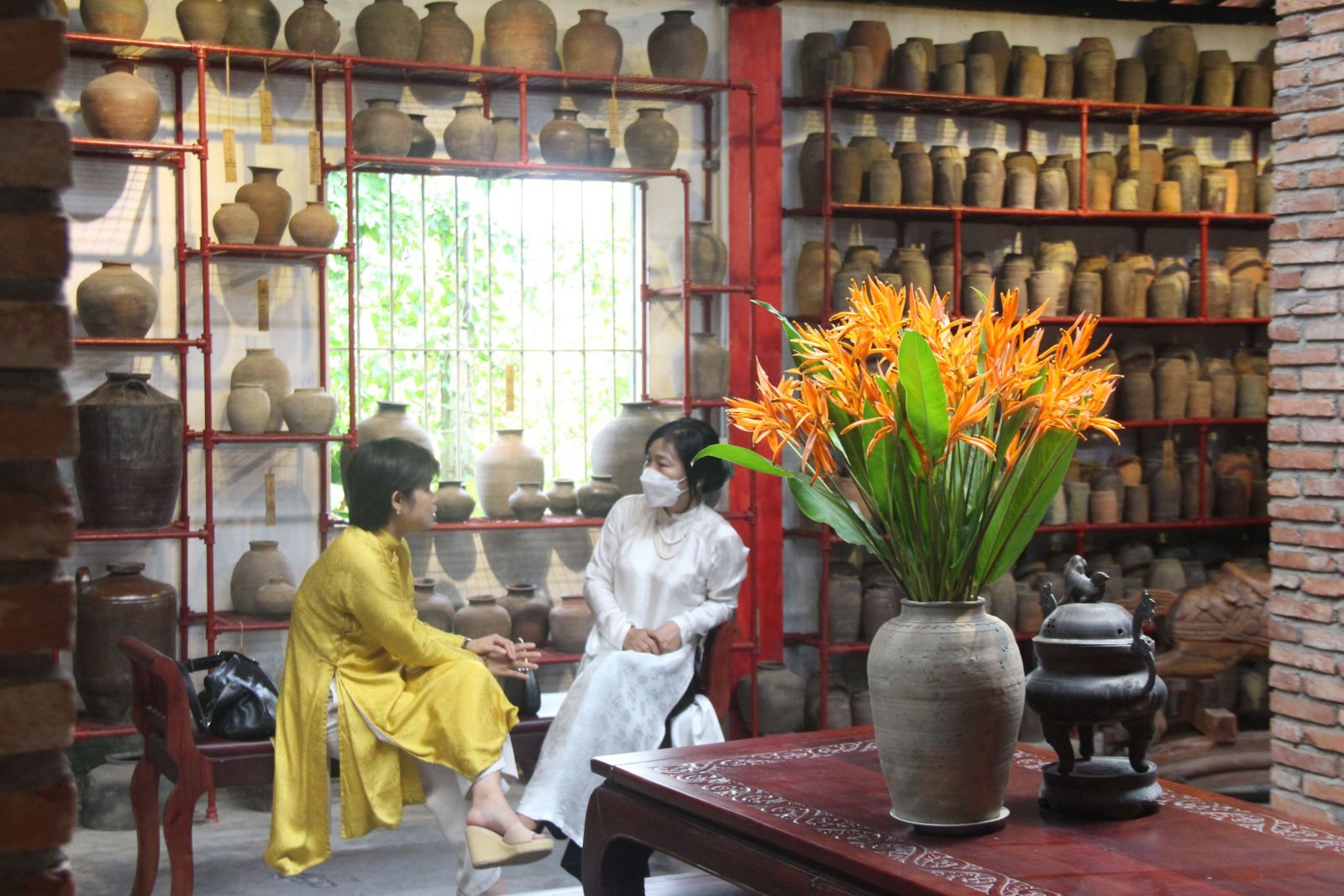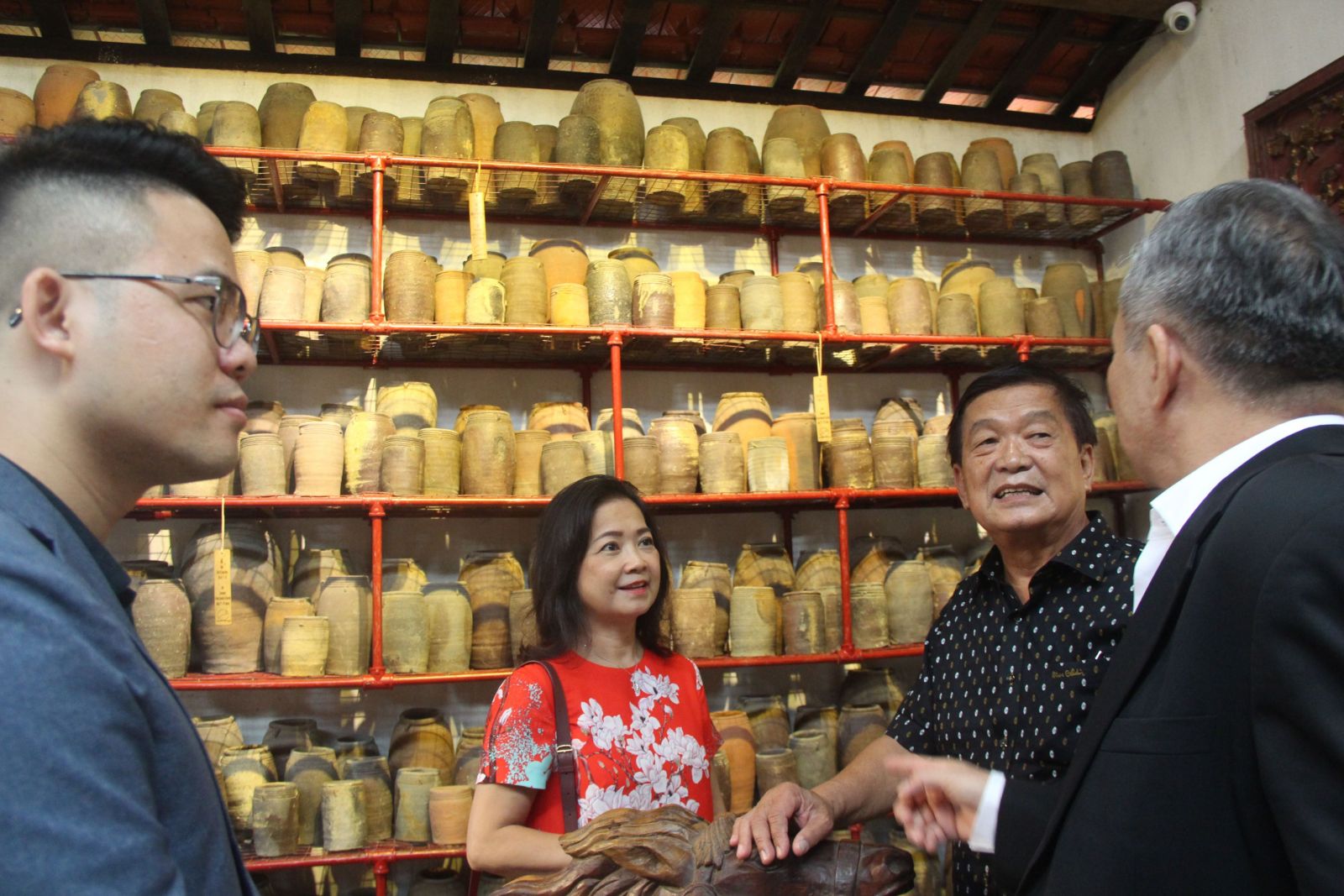Dr. Nguyen Anh Thu (Department of Cultural Heritage, Hanoi University of Culture) had a conversation with Thua Thien Hue Weekend Newspaper about the predestined bond and support for the birth process of some private museums of the ancient capital.

Dr. Nguyen Anh Thu
She recalled, "In 2008, I was fortunate to meet cultural researcher Ho Tan Phan."
Could you please talk more about the origin of that predestined bond?
That year, I was doing a doctoral thesis on Champa cultural pottery in Central Vietnam, so I came to Hue to seek and ask Mr. Ho Tan Phan for support in the document to complete the thesis. In 7 years (2008-2015), I studied uncle Ho Tan Phan’s collection of pottery fished out of the Huong River, classified, inventoried and evaluated the value of the collection of ancient pottery from the Huong River.
Also in the process of working with uncle Ho Tan Phan, I was introduced by him to many other antique collectors in Hue to exchange information and compare artifacts among private collections. Before his death, he had always cherished the dream of establishing a museum on the Huong River right at his own house. Unfortunately, for many reasons, the dream did not come true.
By 2019, at the invitation of Prof. Dr. Thai Kim Lan, I returned to Hue to continue researching the late painter Thai Nguyen Ba’s collection of ancient pottery fished out of the river and contributed to the completion of the file of application for operation permit for the Huong River Museum of Ancient Pottery. As everyone knew, this museum was allowed to operate by the government in 2021 and officially opened to visitors last April.
And does that predestined bond go on?
Subsequent to the birth of the Huong River Museum of Ancient Pottery, I continued to support the Cecile Le Pham Museum of Fine Arts in finalizing the scientific file and procedures for the operation permit. To date, this museum has been allowed to operate.



The collection and exhibition of artifacts inside the museum is assessed as very painstaking, meticulous and takes a lot of time
My main job is to build and complete the scientific file for the artifacts being preserved in the museum - that is, classifying, inventorying, and evaluating the historical - cultural values, origin and date of each artifact.
This is a job that requires expertise on archeology, history, fine arts, culture and needs experience upon research and comparison to identify and distinguish antiques and ancient fakes. Artifacts after inventory will be selected according to the specific criteria and topics, meeting the needs of the public.
Regarding the classification and systematization of artifacts and files for non-professional museums, aside from certain knowledge, what skills are required?
The artifacts in public museums have clear origin, scientific history and are evaluated by the scientific council of the museum. By contrast, the artifacts in non-public museums are difficult to identify the origin and very diverse, rich in type and material.
Therefore, in addition to expertise and certain understanding, it is needed to have experience in the process of research and assessment of antiques, even to rely on comparison with the artifacts of the same type in other collections to identify and evaluate the value relatively accurately.
Back to the story of the private museums in Hue, how do you evaluate that system of museums?
Hue Imperial Capital is the place with many rare, precious and unique collections of antiques in Vietnam. Private collectors in Hue own large quantities of antiques diverse and rich in type and material. However, so far, aside from the system of public museums, only 5 non-public museums have been formed and operated.
Despite the short time of operation, the non-public museum system in Hue has so far well performed the functions and tasks of a cultural institution and become the familiar destinations to the public. The museums are located in prime locations, with impressive and attractive exhibitions imbued with Hue culture and the owners’ hallmark. Therefore, in the future, the non-public museum will continue development in quantity and more diversification in type.
Alongside the public museums, which position do the private museums occupy in popularizing Hue culture and heritage?
The non-public museums have become part and parcel of the museum system in Hue in particular and Vietnam in general. Alongside the public museums, the non-public museum system has been playing a vital role in the cause of preserving and promoting Hue's cultural heritage values, contributing practically to promoting Hue culture, heritage to the public and educating history and culture for the generations, especially the young generation.
With the application of modern exhibition techniques, new thought in the way of collecting, explaining, promoting, organizing services, the non-public museums have contributed to diversifying exhibition space , attracting tourists to Hue to enjoy antiques, enjoy art and experience the research into the history and culture of the ancient capital.
The most impressive in the process of supporting the two non-public museums in Hue is that the owners of the collections are overseas Vietnamese, who have a great love for Hue. Despite having lived and worked for long abroad, back to Hue, they have devoted their heart to the conservation and promotion of the value of national cultural heritage.
It was the enthusiasm of Prof. Dr. Thai Kim Lan and Ms. Cecile Le Pham in preserving and promoting Hue cultural heritage that made me attached to and supportive of every professional work before and after the museum was established.
Hopefully, in the coming time, with the province’s attention, support and encouragement through the system of mechanisms and policies, Hue will awaken the cultural heritage resources in the community and have more non-public museums.
In your opinion, what are the advantages and drawbacks the private museums in Hue confronting?
Non-public museums in Hue have many advantages upon establishment and operation, especially when Hue is one of the localities at the vanguard of building a system of policies to encourage and facilitate the establishment of some non-public museums.

In the coming time, with the attention, support and encouragement through the system of mechanisms and policies of the province, Hue will awaken the cultural heritage resources in the community
Hue is also a potential place to develop a system of non-public museums because many collectors here own the unique collections of antiques, meeting the criteria of establishing non-public museums.
The greatest difficulty the non-public museums in Hue face is the human resources both weak and deficient in professional expertise. The museum owners are mainly those who are dedicated to the heritage but have no expertise in museology.The number of employees at non-public museums is tiny; some museums have no employees. Therefore, the professional expertise activities at museums have not implemented synchronously and methodically in conformity with the stipulations of the sector regulator.
The issue of funding also exerts a great impact on the existence of non-public museums. However, with the effective guidelines and policies meeting the practical needs to develop the non-public museum system, recently Hue had a very striking number of non-public museums and was forecast to rise quickly in the long run.
Thank you for the conversation!
Story: PHAN THANH
Photos: PHAN THANH – TRUNG PHAN
